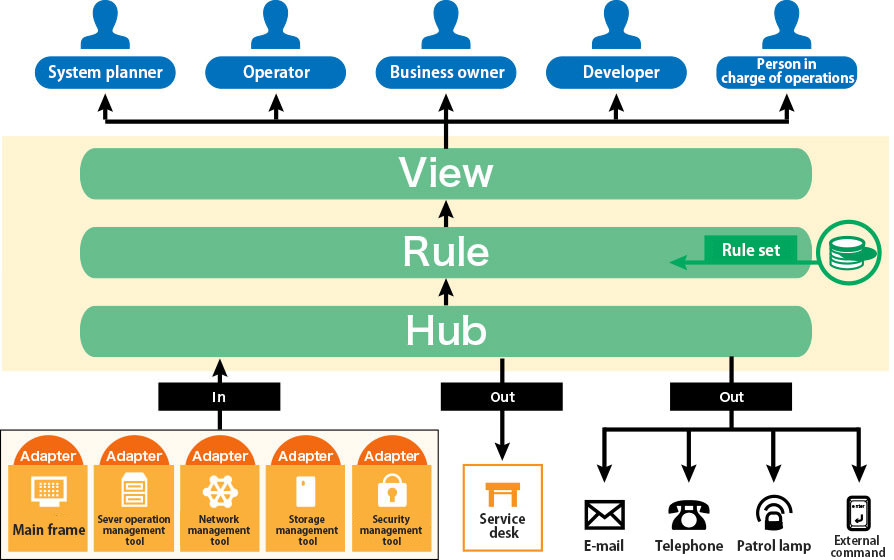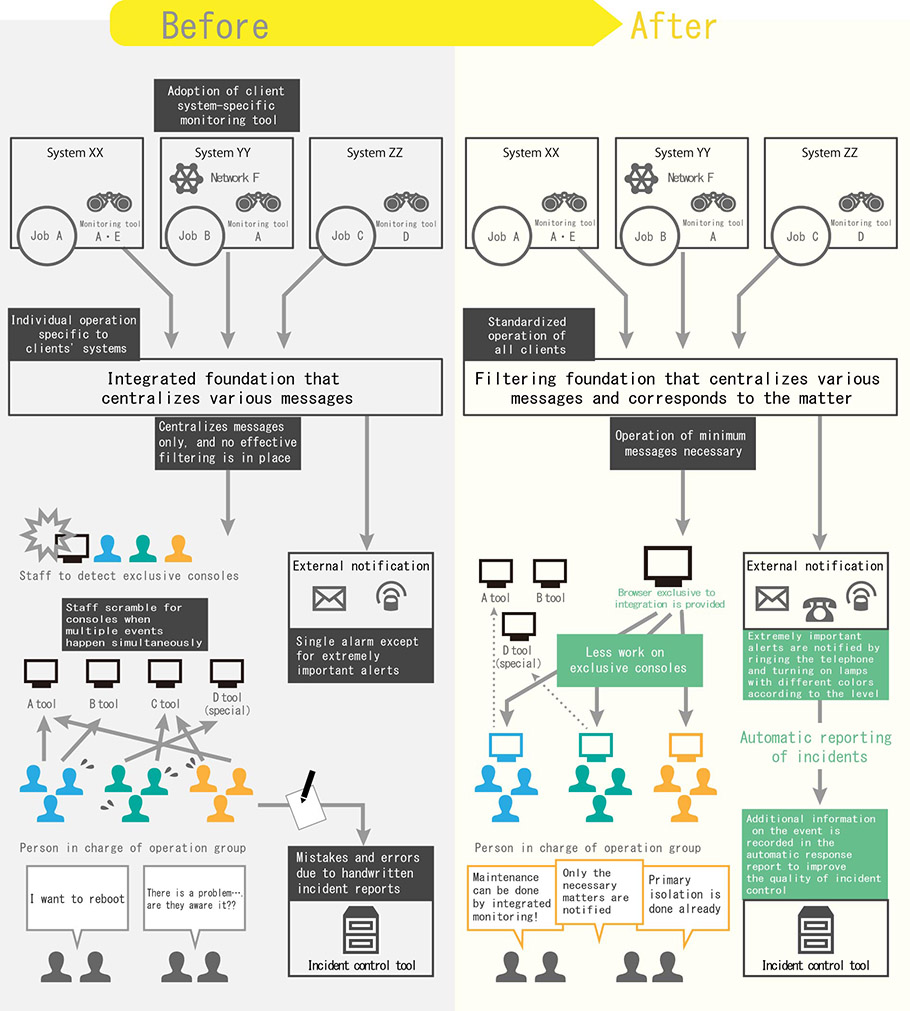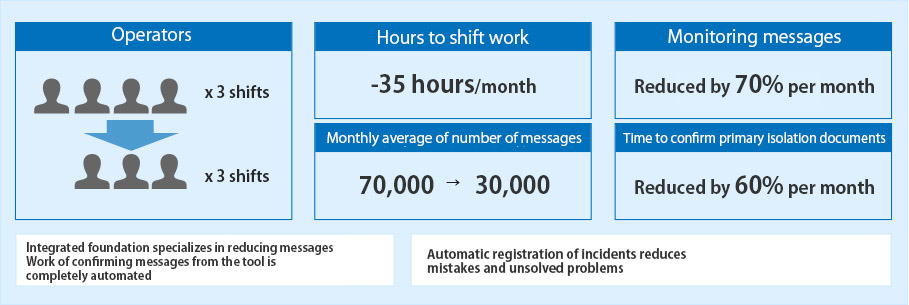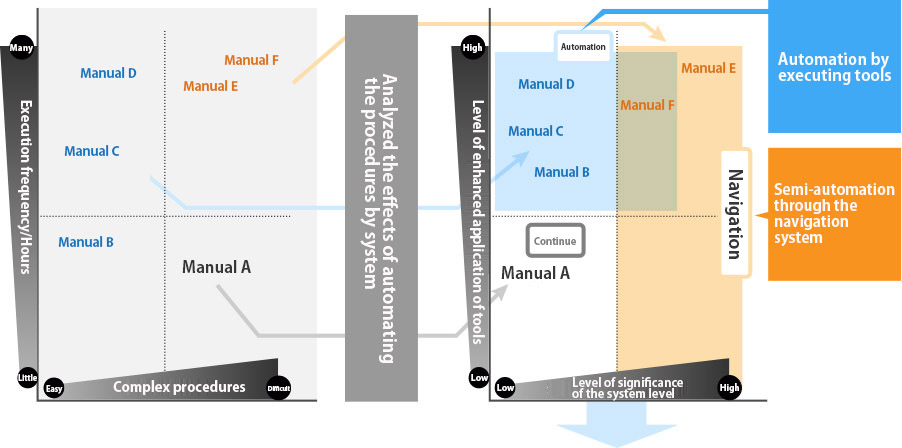
Operation information navigation focusing on "people," achieving higher efficiency and automation of increasingly complex system operation
This is an operation information navigation that focuses on "people" to achieve higher efficiency and automation of increasingly complex system operation, as well as to appropriately present diverse information to persons in charge.
This achieves integrated management by grouping multiple operation management tools and optimal IT service management.
Compatibility with 64 bit has enabled integrated management at even a larger scale.


 This screen allows flexible designing, corresponding to the roles and job details of the user, system configuration, and operation forms. Use of colorful screen functions including various shapes, images, and lists, easy-to-see screen displays focusing on "people" can be achieved. Real-time notifications of latest information can also be made by rule processing.
This screen allows flexible designing, corresponding to the roles and job details of the user, system configuration, and operation forms. Use of colorful screen functions including various shapes, images, and lists, easy-to-see screen displays focusing on "people" can be achieved. Real-time notifications of latest information can also be made by rule processing.
 This is an engine that dependently determines complex information and automatically executes actions in response to events. Determination based on "correlation of information" which conventionally required human confirmation and determination can easily be made into rules. A pipeline method is adopted for application of rules, allowing easily combining multiple rules. Settings of user-specific rule pipelines and prior operation checks of rules are also supported.
This is an engine that dependently determines complex information and automatically executes actions in response to events. Determination based on "correlation of information" which conventionally required human confirmation and determination can easily be made into rules. A pipeline method is adopted for application of rules, allowing easily combining multiple rules. Settings of user-specific rule pipelines and prior operation checks of rules are also supported.  This engine mutually connects with multiple tools to concentrate on collecting and distributing information from various tools. Information collected from various tools are accumulated once and sent to the Rule engine. In addition, linking with the service desk allows smooth escalation of event information such as issuance of trouble tickets or closing processes. Executing an optional external command when certain conditions are met is also possible.
This engine mutually connects with multiple tools to concentrate on collecting and distributing information from various tools. Information collected from various tools are accumulated once and sent to the Rule engine. In addition, linking with the service desk allows smooth escalation of event information such as issuance of trouble tickets or closing processes. Executing an optional external command when certain conditions are met is also possible.
Listed company A had a massive amount of overflowing messages from the monitoring system, and was facing issues such as too much time required from message detection to execution of operation, number of operators, costs, and increasing hours of work. To solve this problem, messages from the monitoring server (operation monitoring) were integrated to improve the efficiency of confirming messages and executing responses.




Major company B needed to reduce the number of system problems to improve its quality of IT services. However, operational information was not shared, and automation and streamlining was not progressing due to overlapping work, which created problems such as too much dependency on individual work and more workload. To solve these problems, visualization of the operational environment was promoted, and a simple execution foundation for operational work was introduced to reduce the users' work.




Click here to download documents
Click here for inquiries